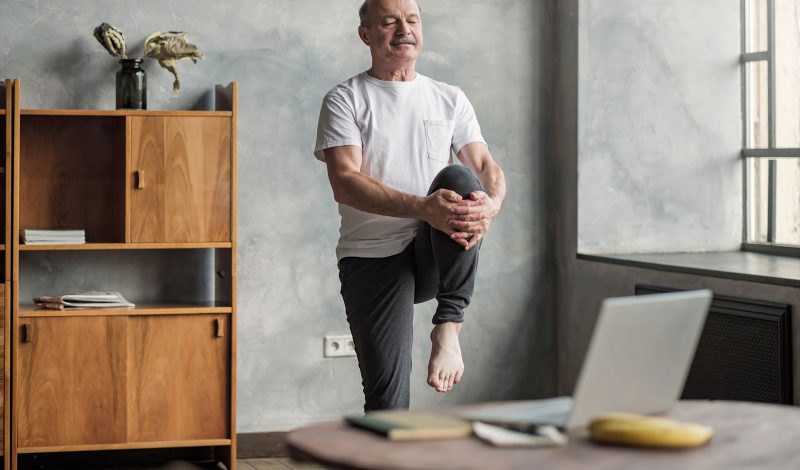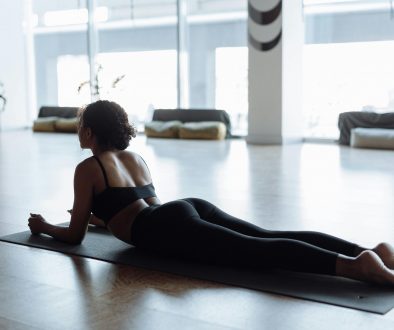Flexibility
Monika Chiropractor with Skelian talks through her perspective on flexibility.
Over the years, I have seen a lot of patients who have spoken to me about not being flexible, have never been flexible, or that their flexibility has significantly worsened with age. Often people believe that they should be as flexible as a gymnast, however, the average person does not need that level of flexibility for their normal activities. There is a general association between tight muscles, low back pain, neck pain and sports injuries.
As part of my chiropractic management with patients, I often incorporate stretching into a plan and I regularly give patients some specific flexibility work as part of their home exercises and rehabilitation. From all the patients I work with, generally speaking, most people feel inflexible because they are doing the same activities every day. Repetitive desk work, driving and sitting on the sofa lead to tightening of hamstrings, pectoral muscles and neck muscles which over time can lead to dull, achy and stiff low backs and neck. This has led me to write this blog as I would like to encourage everybody to start increasing their walking/movement each week to help improve their flexibility.
Start by Choosing an Exercise or Class that Works For You
In order to start implementing flexibility into your routine, I suggest that you look at your week and assess what you can realistically do. If you have the time and it is convenient to go to a class, then I suggest joining a beginner’s yoga or tai chi class. For those that have never been to yoga because you do not think it’s for you, let me start by telling you that there are many different types of yoga. Some are more meditative, some are high energy and flow faster, whilst others hold positions for longer. Find a class and a teacher that provides what works best for you. A few patients have told me how much they enjoy hot yoga (different to Bikram) as they feel that the warmth of the room helps them relax and achieve an increased range of motion. Yoga also strengthens your core and other muscles, so it’s not just about stretching.
Tai Chi is a martial art which combines self-defence and meditation and has been shown to improve balance, fitness and flexibility. Several studies have shown that taking part in regular Tai Chi reduces the number of falls in the elderly, as well as reduces pain in those with chronic low back pain and conditions such as fibromyalgia. There are different types of Tai Chi, some are more focused towards health, whilst others towards stress reduction. Again, like yoga, find a class and teacher that fits with what you want to achieve.
Home Exercises If You Do Not Have Time for A Class
A lot of people feel that they do not have enough time to get to a class, there are no classes nearby, or that exercise classes are simply not for them. If this is you, then look at the structure of your week and see if you can schedule even just five minutes for working on your flexibility. If you cannot find five minutes, then you are probably not serious about improving your flexibility, as everybody can find five minutes somewhere (you can do it whilst watching Netflix). If you can manage more, then great, but be realistic with yourself and do not set yourself up to fail; change can be made by making with small and regular steps. I often only give my patients a maximum of three exercises or stretches to do at any one point in time, otherwise, it can often feel overwhelming, is too much to remember, and risks them not being done at all. Hold each stretch for thirty seconds on each side. This will take you a total of three minutes of your day if you do it in succession. There are some great YouTube videos online (I recommend Adrian Does Yoga) which focuses on different areas of the body.
Practice Often
If you join a class, try and commit to going weekly. If you are doing home stretches, aim for a couple of times a week. Tie it to something you do regularly, for example when you first decide to sit down on the sofa to watch TV. If you spend the first five minutes watching a programme doing some stretches, you will be amazed how quickly you’ll improve.
If You Are Somebody Who Already Regularly Works Out
Whilst I agree you don’t feel the same rush with stretching as when doing a HIIT workout or a good weight-lifting session, stretching is easy to incorporate into your routine, both before and after exercise. More recent evidence points to the fact that static stretching as part of a warm up routine, may reduce the rate of injury at the musculotendinous junction, especially with explosive activities such as sprinting. Interestingly there is no research yet suggesting that it reduces the rate of purely a muscle injury during exercise. Despite this, many athletes, amateur and professional will still incorporate a lengthy stretching regime before they start to help increase their range of motion. There is conflicting evidence for the benefits of dynamic (stretching with motion) vs. static stretching (holding in one position for a sustained period of time). It has been suggested by one large scale review of research, that static stretching alone should not be the sole way to warm up, as it has been shown to temporarily reduce power/strength output in some muscle groups, and so the safest approach in such activities could be to in fact perform the static stretching post-event.
Some Easy Flexibility Exercises to Try at Home
(Remember to hold each stretch for at least 30 seconds!)
- Hamstring Stretch
This stretch can be done on the floor or standing with one leg on a chair, and then lean towards your toes until you start to feel a gentle pull at the back of the thighs.
- Figure 4 Stretch
This is a good stretch for anyone with tight glutes or piriformis muscle. Lie on your back, bring your knee up and place your other foot across your leg. If you find it too difficult to bring your leg up, you can keep it on the floor and then cross your leg over. As you improve, you should be able to bring the leg higher off the ground and towards your chest.
- 90/90 Stretch
Another excellent stretch for tight hip flexors, and easier to do than pigeon pose. This exercise doesn’t put too much stress on your hips. Start by sitting on the floor and putting your right leg forward, bending the knee to the left. Slide the left leg to the side of you, with the knee bent. Try and sink into the floor. Hold for 30 seconds each side.
- Sphinx Pose
This is an exercise that I give regularly to my patients who have low back pain. Lie flat on the floor, and whilst keeping your hips in contact with the floor, raise your torso up until you are resting on your forearms. You may find it tricky to go all the way up onto your forearms at first if you are very stiff, but the more you do it, the easier it will become and the further you will go.
- Chest Stretch
Best done against doorways or a pillar. Place your forearm flat against the wall, make sure your elbow is level with your shoulder. Lean forward with your body until you start to feel a stretch in the chest.
References
https://www.ncbi.nlm.nih.gov/pmc/articles/PMC4934575/
https://www.ncbi.nlm.nih.gov/pubmed/18785063
https://www.ncbi.nlm.nih.gov/pubmed/31849713
https://www.ncbi.nlm.nih.gov/pubmed/28661865
https://www.researchgate.net/publication/311262646_Health_benefits_of_tai_chi_What_is_the_evidence
https://www.health.harvard.edu/staying-healthy/the-health-benefits-of-tai-chi
https://www.nhs.uk/news/lifestyle-and-exercise/health-benefits-of-tai-chi-examined/
Links
https://www.instagram.com/skelian_chiropractic/
https://www.facebook.com/skelianclinic/
https://www.youtube.com/channel/UCCJ9BXYUAAfOie7zTUUeIKA/videos



